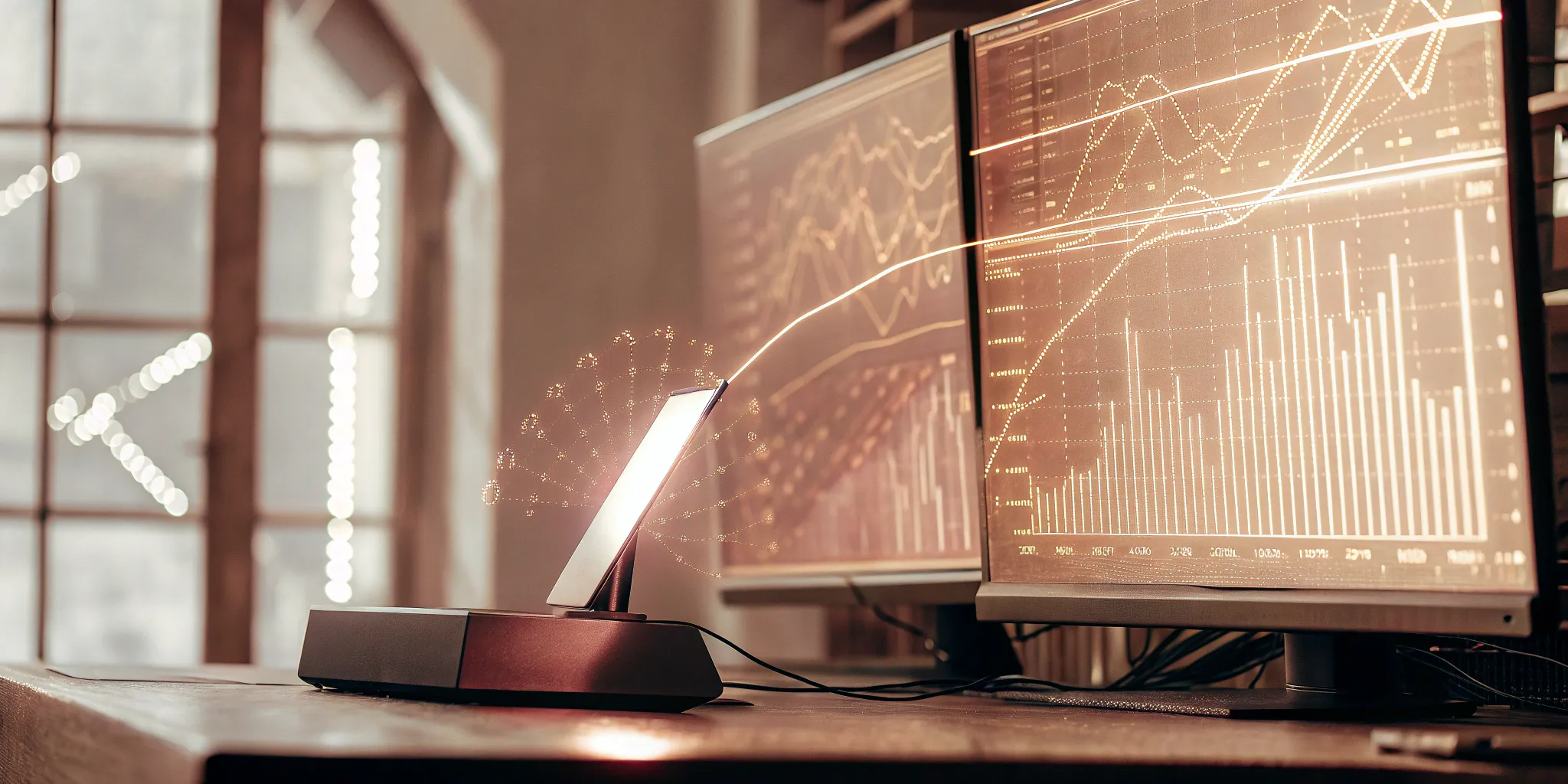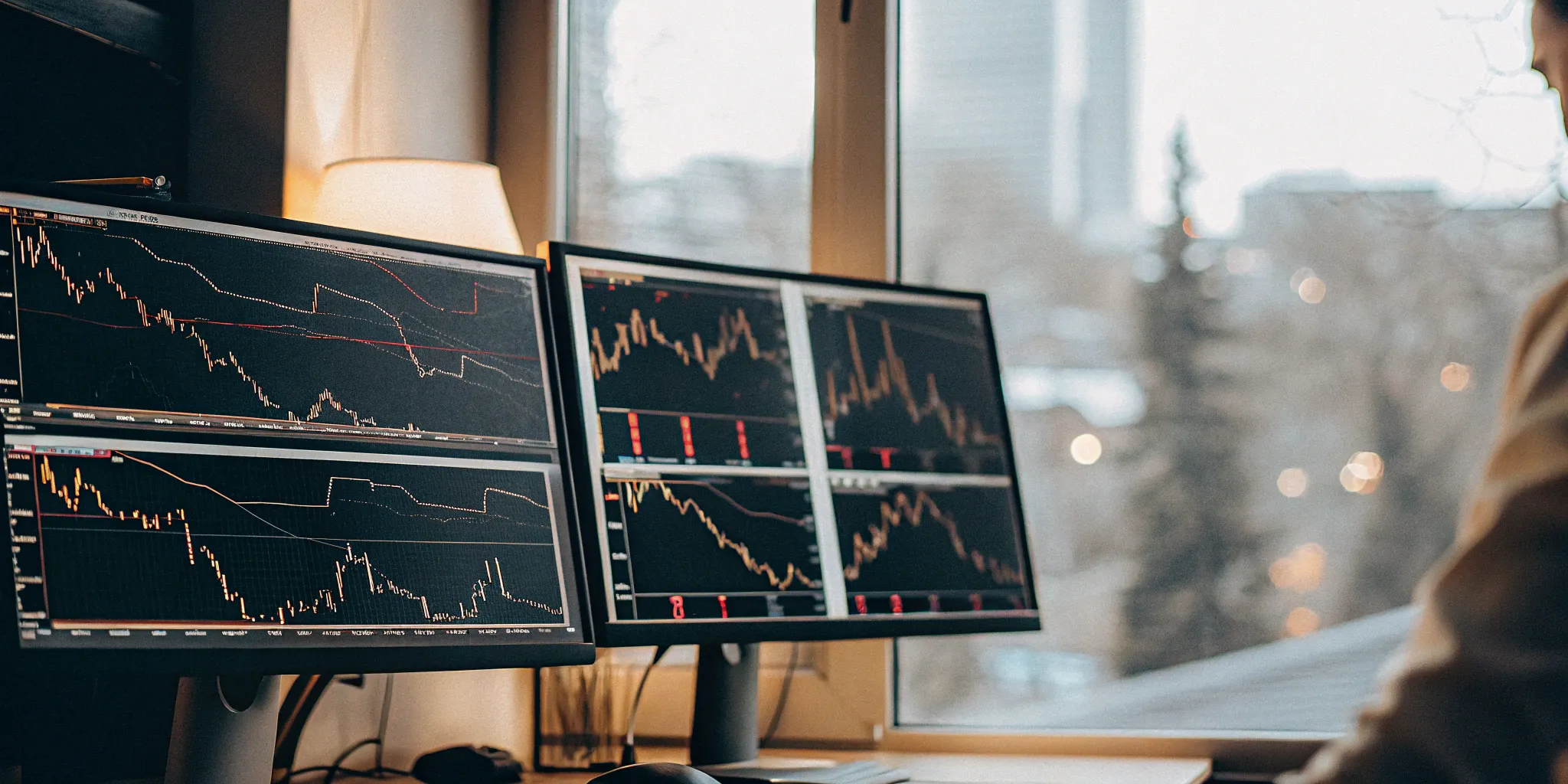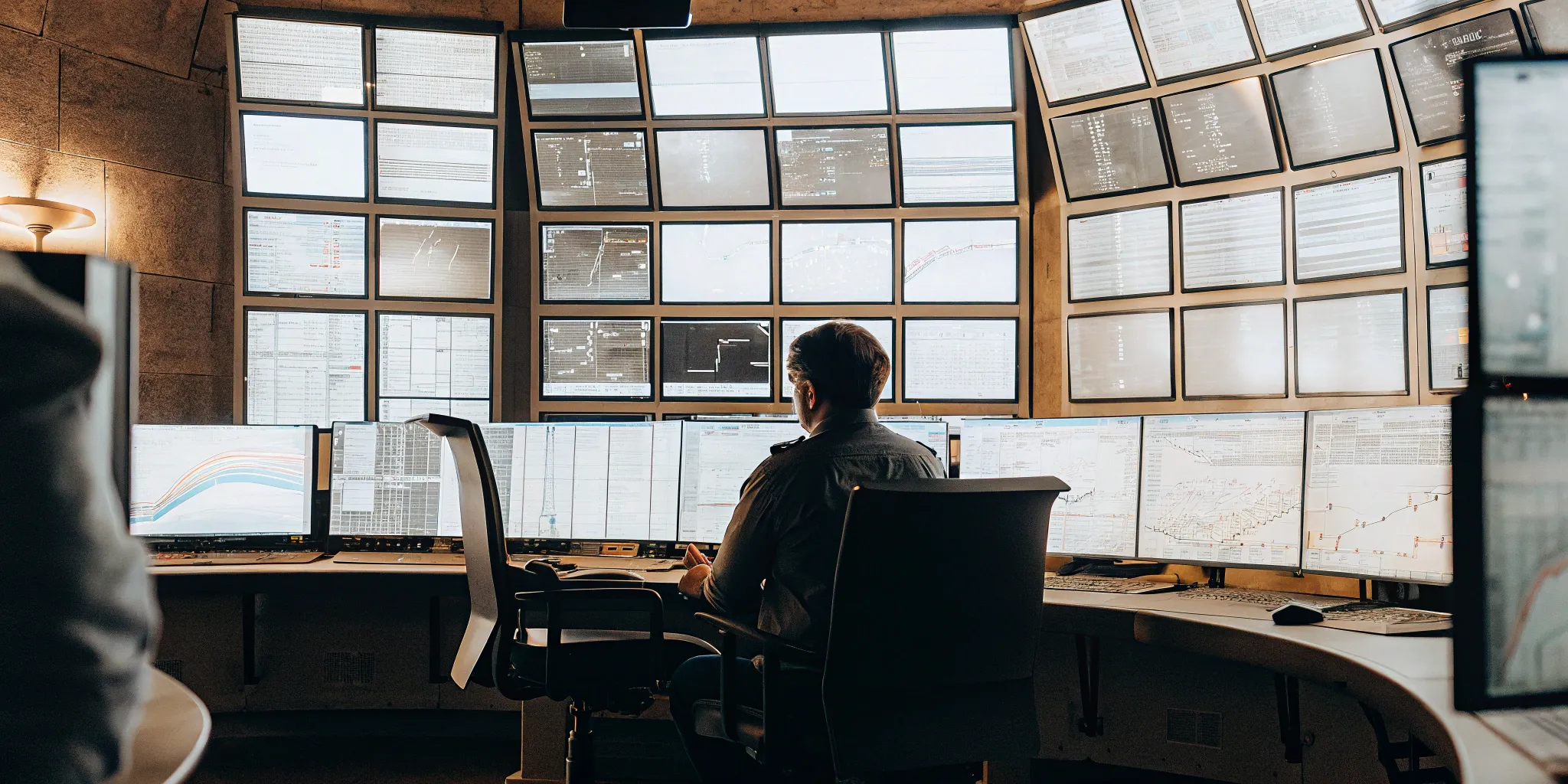Tired of emotional rollercoasters and endless hours glued to your trading screen? AI forex trading might be the game-changer you’ve been searching for. This guide explores how AI can automate your trading strategies, remove emotional biases, and potentially boost your returns. We’ll delve into the key features of AI trading platforms, discuss the importance of risk management, and offer practical advice for integrating AI into your existing forex strategy. Let’s discover how AI can transform your trading experience.
Key Takeaways
- AI in forex trading empowers data-driven decisions, but market knowledge remains key: AI automates trades and analyzes data, but it doesn’t replace a solid understanding of forex markets and a well-defined strategy.
- The right platform maximizes AI’s potential: Look for robust machine learning, real-time data analysis, effective risk management, and customization options. Factor in all costs, including subscriptions, commissions, and hidden fees.
- Successful AI trading combines technology and human oversight: Use AI to enhance your trading, but maintain human judgment. Monitor AI performance, analyze its decisions, and adapt your strategy as needed.
What is AI Forex Trading?
AI forex trading uses artificial intelligence to automate and enhance currency trading. Instead of relying solely on human analysis and decisions, AI-powered systems analyze vast amounts of data, identify patterns, and execute trades automatically. Think of it as having a tireless, data-driven expert working 24/7 to optimize your forex trading. While AI offers powerful tools, a solid understanding of the market and a well-defined strategy are still crucial. As FN Capital explains in their guide to AI forex trading, AI empowers data-driven decisions, but market knowledge remains essential.
Key AI components in forex trading
Several key AI technologies drive forex trading, each playing a specific role. Algorithmic trading forms the foundation, using pre-programmed instructions to execute trades based on specific criteria. Predictive analytics leverages historical data to forecast future market movements, while natural language processing (NLP) analyzes news sentiment and other textual data to gauge market perception. Real-time data analytics provides up-to-the-second market insights, allowing AI systems to react quickly to changing conditions.
How AI algorithms analyze market data
AI algorithms analyze massive datasets of historical market data—including prices, trading volume, and economic indicators—to identify patterns and trends. This analysis forms the basis for predictive models that attempt to forecast future market movements. These models are constantly tested and refined against real-time data, triggering automated buy/sell decisions based on pre-defined parameters. As described by The5ers in their analysis of AI forex trading, these algorithms compare predictive models to real-time market conditions to execute trades. AI trading platforms often incorporate machine learning, allowing the system to adapt and improve its performance over time by learning from past trades and market fluctuations.
Top AI Forex Trading Platforms
Finding the right AI forex trading platform is crucial for success in today’s fast-moving currency markets. Here are a few platforms to consider, each offering unique features and benefits:
FN Capital
FN Capital simplifies forex trading with AI. Automate your EUR/USD trades with its proprietary FAST AI algorithm, eliminating emotional decisions and the need for constant market monitoring. This allows you to focus on other aspects of your investment strategy while the AI handles the complexities of forex execution. FN Capital offers flexible subscription options, from a free trial to explore the platform to tiered plans with increasing features and potential returns.
IC Markets
Considered by some to be a top platform internationally, IC Markets offers competitive spreads and a robust trading environment suitable for both beginners and experienced traders. Its comprehensive features and tools provide a solid foundation for those looking to implement AI-driven strategies.
FP Markets
FP Markets is often noted as a good option for beginners, providing educational resources and a user-friendly interface. This makes it easier for new traders to understand the forex market and start using AI tools effectively.
AvaTrade
Known for its focus on automated trading, AvaTrade offers a variety of tools and platforms that cater to automated trading strategies. This makes it a strong choice for traders who prefer a hands-off approach and rely on algorithms to execute trades.
TastyFX
TastyFX is often highlighted as a solid overall platform, especially in the US, providing a comprehensive trading experience with competitive fees and a strong focus on customer support. This can be particularly helpful for traders who value reliable assistance.
Benefits of AI Forex Trading
AI is transforming the world of forex, offering traders powerful new tools and capabilities. Let’s explore some key advantages of incorporating AI into your forex trading strategy.
Reduce emotional decision-making
One of the biggest challenges in forex trading is managing emotions. Fear and greed can lead to impulsive decisions, often resulting in unnecessary losses. AI-powered systems execute trades based on pre-defined rules and algorithms, removing emotional biases from the equation. This data-driven approach empowers you to make more rational choices, aligning your trades with your overall strategy rather than short-term market fluctuations. While AI provides valuable insights, understanding market dynamics and a solid trading strategy remain crucial for long-term success.
Enhance speed and efficiency
The forex market moves at a blistering pace. AI trading systems process vast amounts of data and execute trades with remarkable speed, providing a significant advantage. This rapid response is particularly valuable in high-frequency trading, where even tiny price movements can translate into substantial profits. AI’s ability to react instantly to market changes allows you to capitalize on favorable conditions and mitigate potential losses more effectively.
Improve pattern recognition
Identifying patterns and trends is essential for successful forex trading. AI algorithms excel at analyzing massive datasets of historical market data, including prices, volume, and economic indicators. This analysis allows AI systems to create predictive models that are constantly compared to real-time market conditions. When a match is identified, automated buy/sell decisions are triggered based on pre-set parameters. This approach helps you spot emerging trends and make more informed trading decisions.
Monitor markets 24/7
The forex market operates 24 hours a day, five days a week. Manually monitoring market fluctuations around the clock isn’t feasible for most traders. AI-powered systems, however, can monitor the market continuously, ensuring you never miss a potential trading opportunity. These systems use machine learning and sophisticated algorithms to analyze data, predict trends, and execute trades even while you’re sleeping. This constant vigilance helps you stay ahead of the curve and maximize your trading potential.
Key Features in AI Forex Trading Platforms
Finding the right AI forex trading platform means understanding the core features that drive performance and manage risk. Here’s what to look for:
Machine learning capabilities
AI’s strength lies in its ability to analyze vast amounts of data and identify potential trading opportunities. A robust platform should leverage machine learning to adapt to changing market conditions. As FN Capital explains in their guide to AI forex trading, AI can empower data-driven decisions, but a solid understanding of forex markets remains essential. Don’t expect AI to do all the work—it’s a tool to enhance your strategy, not replace it.
Real-time data analysis
Effective AI forex trading hinges on real-time data analysis. The platform’s algorithms should process massive datasets of historical market data, including prices, volume, and economic indicators, to create predictive models. These models are then constantly compared to live market data, triggering automated buy/sell decisions based on pre-defined parameters, as outlined in The5ers’ analysis.
Risk management tools
Automated risk management is crucial for protecting your capital. Look for platforms offering features like automated stop-loss orders, limit orders, and hedging strategies. AlgosOne emphasizes these tools for mitigating losses and maximizing profit potential. A good platform will dynamically adjust risk parameters based on real-time market volatility.
Customization options
Not all trading styles are the same. Your chosen platform should offer customization options to align with your specific needs and risk tolerance. This might include adjustable parameters for the AI’s trading logic, the ability to set specific entry and exit points, or control over the level of automation. FN Capital advises evaluating platforms based on features, fees, and user experience to find the right fit.
Fast and accurate execution
In the fast-paced world of forex, speed and accuracy are paramount. Your platform should execute trades quickly and efficiently to minimize slippage and capitalize on fleeting opportunities. Nurp highlights execution speed as a critical metric. Look for platforms that prioritize fast execution and provide transparent performance metrics.
Costs of AI Forex Trading
Before diving into AI-powered forex trading, it’s essential to understand the associated costs. Transparency in fees is crucial for making informed decisions and setting realistic profit expectations. This section breaks down the typical costs involved, from subscription models to potential hidden fees.
Subscription Models
Many AI forex trading platforms operate on a subscription basis, offering various tiers with different features and functionalities. Some platforms might offer a free trial to test the platform before committing to a paid plan. Tiered subscriptions often unlock additional features, such as advanced charting tools, more sophisticated algorithms, or increased trading capacity. Carefully consider your needs and trading style when selecting a subscription. A higher-tier plan might be worthwhile for active traders seeking advanced capabilities, while a basic plan might suffice for beginners. FN Capital is one example of a platform with tiered subscription options.
Trading Fees and Commissions
Beyond subscription fees, understand any trading fees and commissions charged by the platform or the underlying broker. These can include spreads, commissions per trade, or even fees for withdrawals. These costs can significantly impact your overall profitability, so compare fee structures across different platforms. Remember that evaluating any automated trading system requires a good understanding of key performance metrics to see how effective the system is after fees are considered.
Hidden Costs
Be aware of potential hidden costs that might not be immediately apparent. These can include data fees, software updates, or charges for accessing premium features. Thoroughly review the platform’s terms and conditions to uncover any potential hidden fees. A clear understanding of all costs involved helps you accurately assess the true cost of using an AI forex trading platform and make a sound financial decision.
Compare AI Forex Trading Platforms
Not all AI forex trading platforms are created equal. Understanding the key differences helps you choose the best fit for your trading style and goals. Here’s what to consider when comparing platforms:
Performance Metrics
Solid performance metrics offer a glimpse into a platform’s potential. Look for platforms that emphasize transparency and offer verified trading data. Key metrics to consider include win rate, maximum drawdown, profit factor, execution speed, and the Sharpe Ratio. These metrics work together to paint a comprehensive picture of a system’s strengths and weaknesses. A higher win rate is great, but it’s essential to consider it alongside drawdown, which shows how much an account can decline in value. The Sharpe Ratio helps you understand risk-adjusted returns. Don’t rely on marketing hype—dig into the data.
User Experience and Interface
A user-friendly interface is crucial, especially if you’re new to AI forex trading. The platform should be intuitive and easy to use, allowing you to monitor trades, adjust settings, and access support without hassle. Look for features like customizable dashboards, real-time alerts, and mobile accessibility. A seamless user experience lets you focus on your trading strategy, not wrestling with the software. Consider checking if the platform offers a practical guide to help you get started.
Customer Support and Resources
Reliable customer support and educational resources can make a big difference in your trading journey. Choose a platform that offers responsive customer service, helpful documentation, and educational materials. Whether you need help troubleshooting a technical issue or want to learn more about AI trading strategies, access to quality support and educational resources can be invaluable. Some platforms, like EasyFXTrading, even offer personalized mentorship.
Regulatory Compliance
Trading on a regulated platform provides an important layer of security. Check if the platform complies with relevant financial regulations in your region. This due diligence helps protect your funds and ensures the platform operates within established legal frameworks. Regulatory compliance demonstrates a commitment to ethical practices and builds trust.
Potential Risks and Challenges of AI Forex Trading
While AI forex trading offers exciting possibilities, it’s essential to understand the potential downsides. Like any investment strategy, it’s not without its challenges. Knowing the risks upfront allows you to approach AI trading with realistic expectations and a well-informed perspective.
Algorithmic Biases
AI systems learn from the data they’re fed. If this data reflects existing market biases (like disproportionate representation of specific economic conditions), the AI can inadvertently perpetuate them in its trading decisions. This can lead to unexpected outcomes and potentially impact profitability. Choosing a platform that prioritizes diverse data sets and regularly audits its algorithms for bias is crucial.
Overreliance on Historical Data
AI thrives on data, using past market behavior to inform future trades. However, markets are dynamic and influenced by factors beyond historical trends. Relying solely on past performance to predict future outcomes can be misleading. A robust AI system should incorporate mechanisms to adapt to evolving market conditions and not solely depend on historical patterns. Look for platforms that emphasize adaptability and real-time analysis in their AI models. For example, FN Capital’s proprietary DART (Dynamic Algorithmic Risk Tool) constantly monitors market conditions and adjusts trading strategies accordingly.
Technical Glitches and System Failures
AI trading relies on complex software and server infrastructure. Technical issues, like software bugs or server outages, can disrupt trading activity, potentially leading to missed opportunities or even financial losses. A reliable platform should have robust systems in place to minimize downtime and ensure seamless trading execution, even during unexpected technical disruptions. Ask providers about their system redundancy and disaster recovery protocols.
Market Volatility Impact
Forex markets are inherently volatile. While AI can react quickly to changing conditions, extreme market fluctuations can still pose challenges. An AI system might struggle to adapt to sudden, unforeseen events, potentially leading to losses. Effective risk management tools are essential to mitigate the impact of market volatility on your AI trading strategy. Look for features like stop-loss orders, position sizing controls, and real-time risk assessments. FN Capital’s DART system, for instance, automatically adjusts leverage and trade exposure based on current market conditions.
Start with AI Forex Trading
Getting started with AI forex trading might seem complicated, but breaking it down into smaller steps can make it much easier. Here’s a practical guide:

Choose the right platform
First, evaluate AI forex platforms based on their features, fees, user experience, and regulatory compliance. Consider your trading style and experience. Some platforms are designed for beginners with simple interfaces and educational resources, while others offer advanced tools for seasoned traders. Look for transparent pricing and ensure the platform aligns with your risk tolerance and investment goals. Reading reviews and comparing different platforms will help you make a smart decision. FN Capital, for instance, simplifies forex trading with its AI, FAST AI, which automates EUR/USD trades, removing emotional decisions and the need for constant market monitoring.
Set up your account
Once you’ve chosen a platform, set up your account. This usually involves providing personal information, verifying your identity, and linking your bank account or preferred payment method. Each platform has its own onboarding process, so follow the instructions. Be prepared to provide necessary documentation and comply with any regulatory requirements. Take some time to explore the platform’s interface, features, and available resources.
Develop a trading strategy
Even with AI analyzing data and identifying potential opportunities, a solid trading strategy is crucial. Define your goals, risk tolerance, and preferred trading style. Consider factors like timeframes, currency pairs, and indicators. Backtesting your strategy on historical data can help you assess its potential. Remember that market conditions constantly change, so be ready to adapt your strategy. AI can be a powerful tool, but it doesn’t replace understanding market dynamics.
Integrate AI with human decision-making
AI is a tool that can enhance your capabilities, not replace your judgment. Successfully using AI in forex trading requires a blend of technological know-how and financial understanding. Use AI to gather insights, automate tasks, and manage risk, but don’t blindly follow its every suggestion. Continuously monitor the AI’s performance, analyze its decisions, and make adjustments as needed. The key is finding the right balance between using AI’s power and maintaining human oversight. Remember that AI isn’t a magic solution; it’s a tool that requires skillful application and ongoing refinement.
Common Misconceptions About AI Forex Trading
While AI forex trading offers exciting possibilities, it’s important to approach it with realistic expectations. Let’s clear up some common misconceptions:
AI guarantees profits
One of the biggest misunderstandings is that AI guarantees profits. Even sophisticated AI trading systems don’t offer a surefire path to riches. Markets are inherently unpredictable. While AI can analyze vast amounts of data and identify potential trading opportunities, market conditions shift constantly. Think of AI as a powerful tool that can enhance your trading decisions, not a magical profit-making machine. Learn more about the realities of AI trading.
AI replaces human traders
Another misconception is that AI will completely replace human traders. This simply isn’t the case. AI serves as a valuable tool that can enhance trading strategies, but it doesn’t eliminate the need for human oversight and judgment. Human input is still essential for setting goals, managing risk, and adapting to unexpected market events. The most effective approach combines the strengths of AI with human experience. Explore the role of humans in AI trading.
All AI trading systems are equal
Not all AI trading systems are created equal. Different systems use varying algorithms, data sources, and risk management approaches. It’s essential to carefully evaluate each system based on its specific features, performance metrics, and your individual trading goals. Don’t assume that one AI system is just as good as another—do your research and choose wisely. Compare different AI trading systems.
AI predicts markets with high accuracy
Finally, let’s address the myth that AI can predict markets with pinpoint accuracy. While AI excels at analyzing historical data and identifying patterns, it can’t foresee the future. Market dynamics are influenced by a multitude of factors, many of which are unpredictable. The effectiveness of AI predictions depends heavily on the quality of the data and the algorithms used. AI can provide valuable insights, but it’s crucial to remember that no system can predict market movements with absolute certainty. Understand the limitations of AI in market prediction.
Related Articles
- EasyFXTrading: Your Guide to AI Forex Trading – FN Capital
- Best AI Forex Trading Licenses: Secure Trading Guide
- Futures Trading Algorithms: The Ultimate Guide – FN Capital
- Top Thinkorswim Alternatives for Algo Trading (2024) – FN Capital
- Forex AI Trading: A Practical Guide – FN Capital
Frequently Asked Questions
Is AI forex trading suitable for beginners? Absolutely! Many AI forex trading platforms offer user-friendly interfaces and educational resources specifically designed for beginners. AI can handle the complexities of forex trading, allowing newcomers to focus on learning the basics and developing their strategies. Look for platforms with intuitive dashboards, clear explanations of key features, and responsive customer support. A good platform will empower you to start trading confidently, even with limited experience.
What are the key features to look for in an AI forex trading platform? Choosing the right platform is crucial. Prioritize platforms with robust machine learning capabilities that allow the AI to adapt to changing market conditions. Real-time data analysis is essential for quick decision-making, and comprehensive risk management tools are vital for protecting your capital. The platform should offer customization options to align with your trading style and risk tolerance. Finally, ensure the platform executes trades quickly and accurately to minimize slippage.
How much does AI forex trading cost? Costs vary depending on the platform and the services offered. Many platforms use a subscription model with tiered plans offering different features and functionalities. Be sure to understand any trading fees and commissions charged by the platform or the underlying broker, as these can impact your profitability. Thoroughly review the platform’s terms and conditions to uncover any potential hidden costs before committing.
What are the potential risks of AI forex trading? While AI offers significant advantages, it’s important to be aware of the potential risks. Algorithmic biases can arise if the AI is trained on biased data, leading to skewed trading decisions. Overreliance on historical data can be problematic, as markets are constantly evolving. Technical glitches and system failures can disrupt trading activity, and market volatility can still impact AI-driven strategies. Effective risk management and a balanced approach are crucial for mitigating these risks.
How can I integrate AI with my own trading decisions? The most successful approach to AI forex trading combines the power of AI with human oversight. Use AI to gather insights, automate tasks, and manage risk, but don’t rely on it blindly. Continuously monitor the AI’s performance, analyze its decisions, and make adjustments as needed. Develop a well-defined trading strategy that aligns with your goals and risk tolerance, and use AI as a tool to enhance your decision-making process, not replace it entirely.





